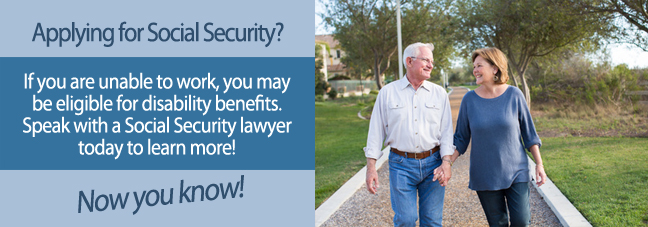One day you are walking down the street when an incredibly sharp pain seems to punch through your chest. Out of nowhere, you have suffered a heart attack. According to the Center for Disease Control, more than 700,000 Americans suffer from a heart attack each year.
Heart attacks vary in intensity and if you have suffered a heart attack that leaves you incapable of supporting your family, you have the right to apply for benefits by submitting a Social Security Disability (SSD) claim with the Social Security Administration (SSA).
An SSD claim represents an important application for you to receive financial benefits that help you pay for daily expenses in case an illness or a disease renders you disabled.
You have to submit a substantial amount of medical evidence to back your SSD claim that a heart attack has made it impossible to work and perform routine daily tasks.
Medical documentation should include signed statements made by your doctor that confirm your heart attack symptoms have surpassed the disabling threshold. Make sure to provide the SSA with as much medical documentation as possible to strengthen your case.
SSA Blue Book: road Map to SSD Benefits
Filing an SSD claim is not a process that involves guessing what the SSA wants to see in the form of medical documentation. The SSA lists every known potentially debilitating disease and illness in the Blue Book, as well as the corresponding medical records you need to submit that proves the existence of disabling heart attack symptoms.
Remember that suffering from a heart attack does not automatically qualify you for SSD benefits. Heart attacks range from mild to severe, which means you must submit hard evidence that a severe heart attack has made you incapable of working and performing daily chores that we take for granted.
Refer to the online form of the Blue Book, as the SSA keeps the information updated to account for scientific breakthroughs that change treatment regimens.

Your Doctor is an Advocate for SSD Benefits
The SSA wants to hear from your doctor when you file a SSD benefits claim. Your doctor will attest to the severity of a heart attack you suffered by presenting medical documentation that proves you suffer from disabling heart attack symptoms.
Many SSD cases receive approval because of statements submitted by licensed health care professionals, but to give your claim more credibility, you should ensure you submit medical records that pertain specifically to heart attack symptoms.
An electrocardiogram (ECG) records electrical impulses generated within the heart. A lab technician connects several small contacts to your arms and legs, as well as across the chest, to feed electrical impulses to an ECG machine.
The results of an ECG test are vital for proving your SSD benefits claim for suffering from a severe heart attack. Although an ECG test can be used while you rest or exercise, the SSA recommends you submit documented results of an ECG after you perform mild exercises.
You should submit the results of other exercise tests conducted by a licensed doctor as well. Exercise tests can include walking on a treadmill and/or riding a stationary bicycle.
Your doctor should not be the only advocate pushing for the approval of an SSD claim. An experienced lawyer that specializes in SSD benefits cases can help you appeal a rejected claim, as well as coach you on what medical records to send for proving your disability case.
Speak with a Social Security lawyer today to learn more about what the SSA Blue Book requires for documenting a disabling heart attack.